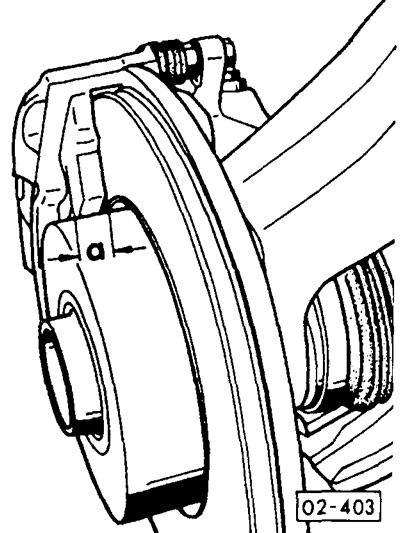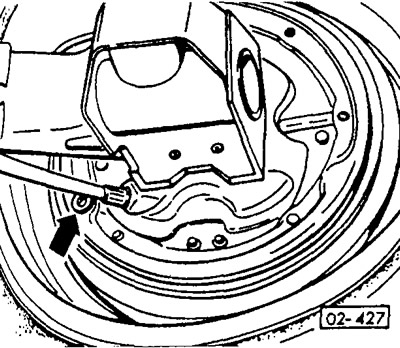Raise the car.
Disc brakes
Perform a visual check of the lining thickness. Shine a flashlight through the wheel opening and visually check the thickness of the outer brake linings. Check the inner brake pads on the inside of the wheels with a flashlight and a mirror.
If it is not possible to unambiguously determine the thickness of the lining, remove the front wheels.

Using a vernier caliper, measure the thickness of the lining -a- together with the reverse side of all outer linings.
Determine the thickness of the inner lining visually.
The front and rear disc brake linings have reached the wear limit if their thickness, including the bearing back side, has reached a value of 7 mm. Without taking into account the thickness of the reverse side, the thickness of the lining is 2 mm. If the wear limit has been reached, replace the brake linings. Be sure to replace all 4 linings of this bridge at the same time.
Note: Approximate wear of 1 mm of lining thickness corresponds to a vehicle mileage of at least 1000 km. This estimate is valid under unfavorable conditions. Brake linings usually last much longer. Thus, with a disc brake lining thickness of 10.0 mm (with carrier back) the remaining service life of the brake pads will correspond to a vehicle mileage of at least 3,000 km.
If removed, install front wheels.
Shoe brakes

Remove the plugs on the rear brake shields.
Shine a flashlight through the hole and inspect the brake linings.
The brake lining has reached the wear limit if its thickness (without supporting metal block) decreased to 2.5 mm. If the wear limit has been reached, replace all 4 brake linings.
When checking the linings, at the same time make sure that there are no traces of brake fluid or oil on the linings. If not, replace the brake pads immediately.
Lower the vehicle, see section «Vehicle lifting».
Tighten wheel bolts crosswise to 110 Nm.

Visitor comments